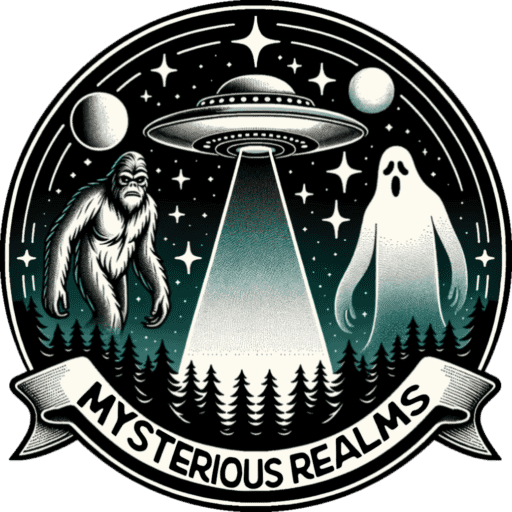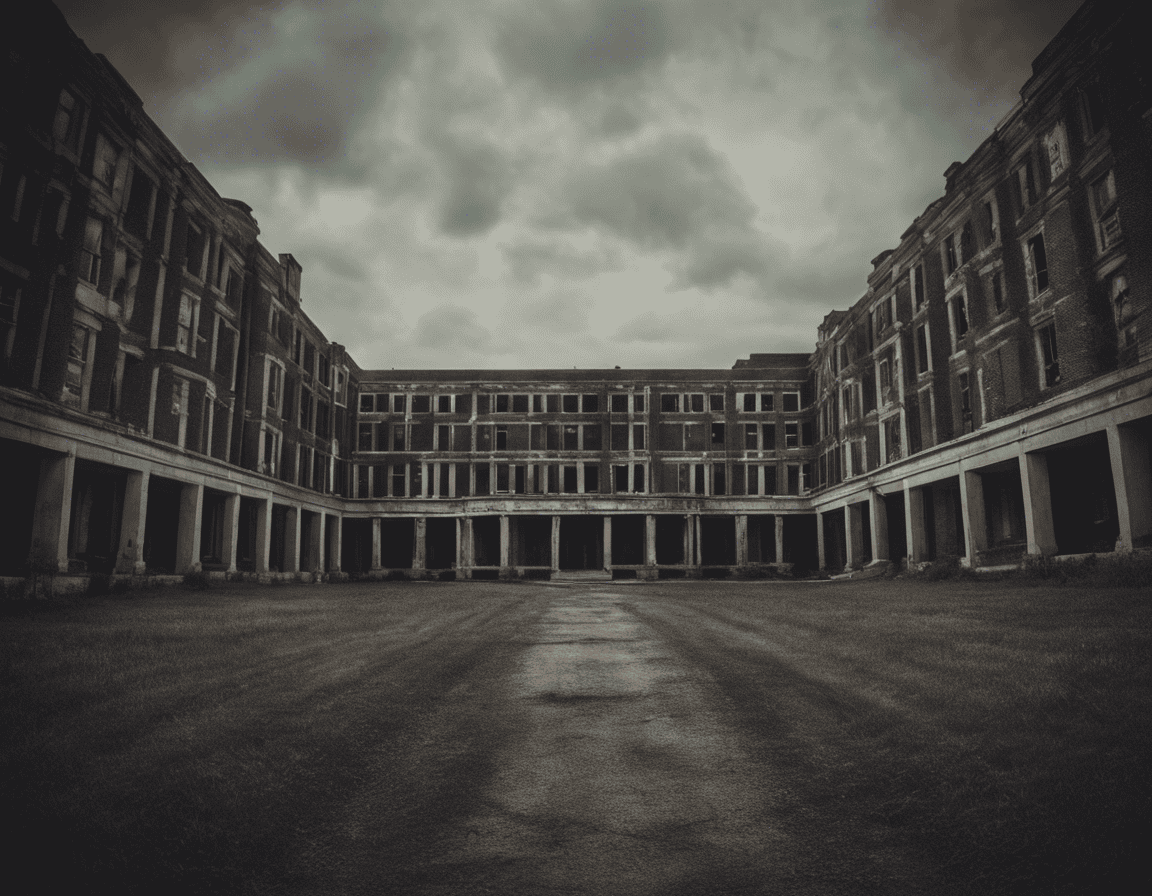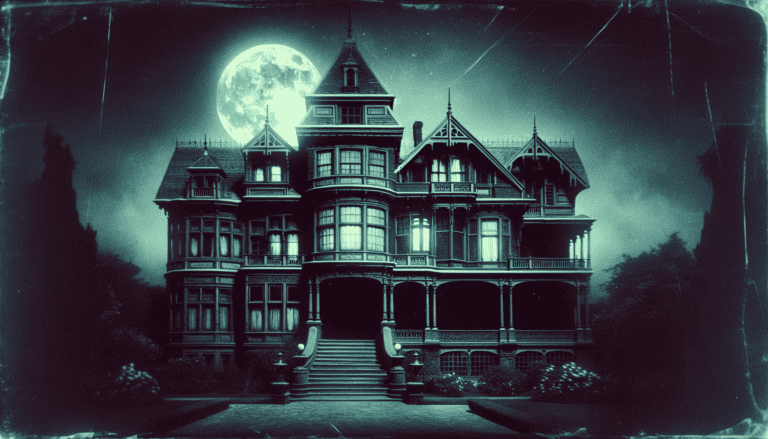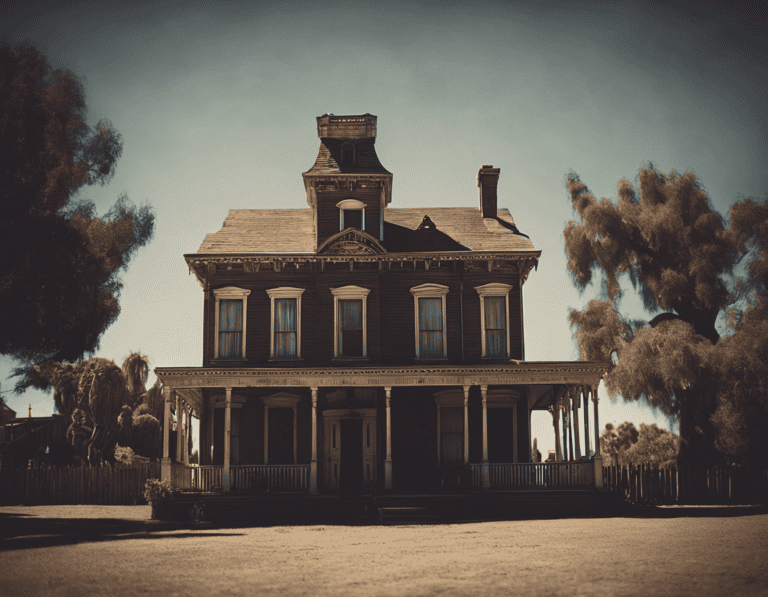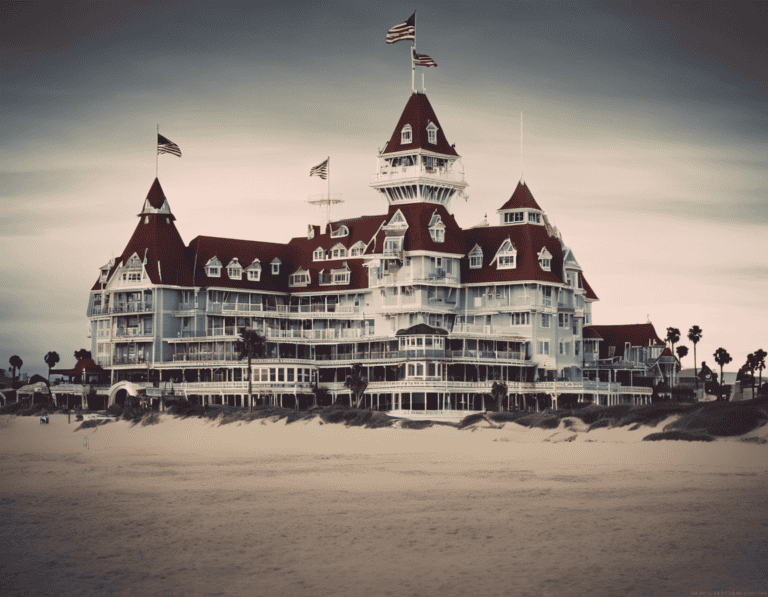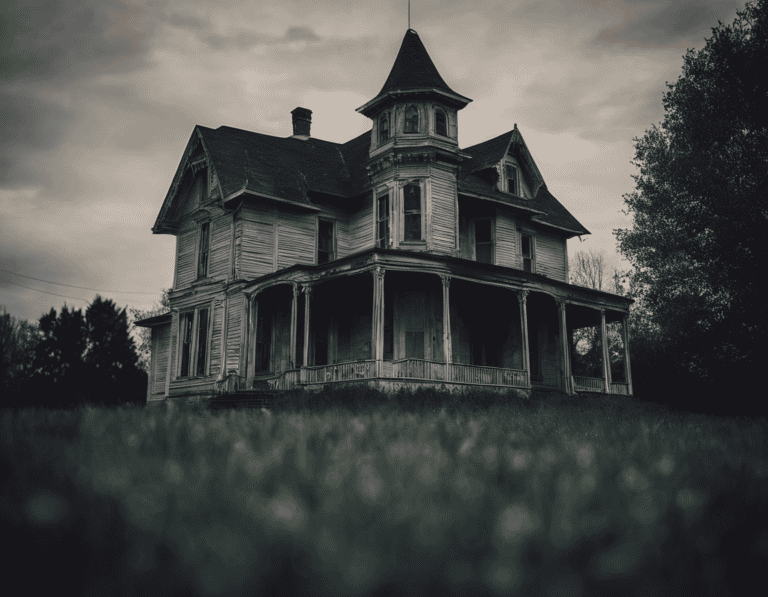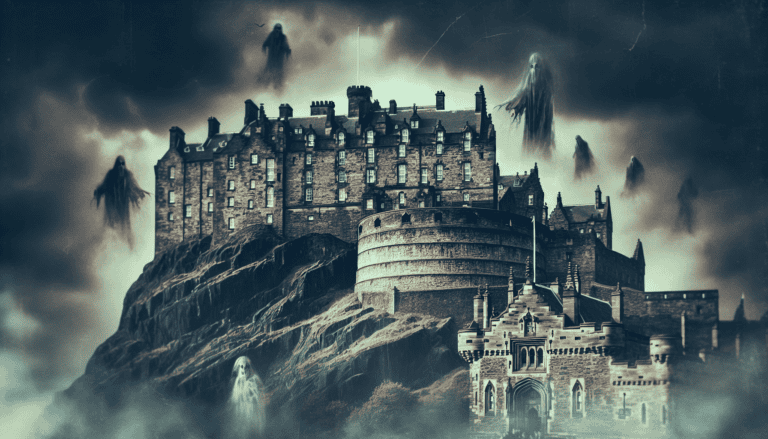The Haunting of Waverly Hills Sanatorium
Built in 1926, Waverly Hills Sanatorium rises from a Louisville hilltop like a Gothic cathedral – its limestone walls telling stories of hope, healing, and heartbreak. This massive medical center opened during America’s devastating tuberculosis crisis, growing to care for over 400 patients at its busiest point.
The five-story structure showcases the medical innovations of its time:
- Large sun porches for natural light therapy
- Open-air treatment areas
- Advanced ventilation systems
- State-of-the-art surgical facilities
These architectural features reflected the best medical knowledge available to fight tuberculosis, then known as the “White Plague.” Louisville doctors used every tool at their disposal, making Waverly Hills the region’s primary TB treatment center.
But statistics tell a sobering story. Between 8,000 and 63,000 patients lost their lives within these walls. The facility’s “death tunnel” – a 500-foot underground passage – allowed staff to remove bodies without affecting patient morale.
This blend of medical history and mortality has created Waverly Hills’ modern legacy as a paranormal hotspot. Visitors and investigators report strange experiences in its empty halls:
- Unexplained sounds and voices
- Moving shadows
- Temperature changes
- Apparition sightings
The tuberculosis epidemic that built Waverly Hills ended decades ago. Yet this limestone giant still stands guard over Louisville, its halls now silent but far from empty. For many, it represents more than a former hospital – it’s a monument where science and spirituality continue to intersect in unexpected ways.
*[TB]: Tuberculosis
The Death Tunnel and Body Chute
The infamous “Death Tunnel” at Waverly Hills Sanatorium remains a haunting reminder of the 1920s tuberculosis crisis. This 500-foot underground passage, also called the Body Chute, extends from the hospital building to the hill’s base, marking a significant piece of medical history.
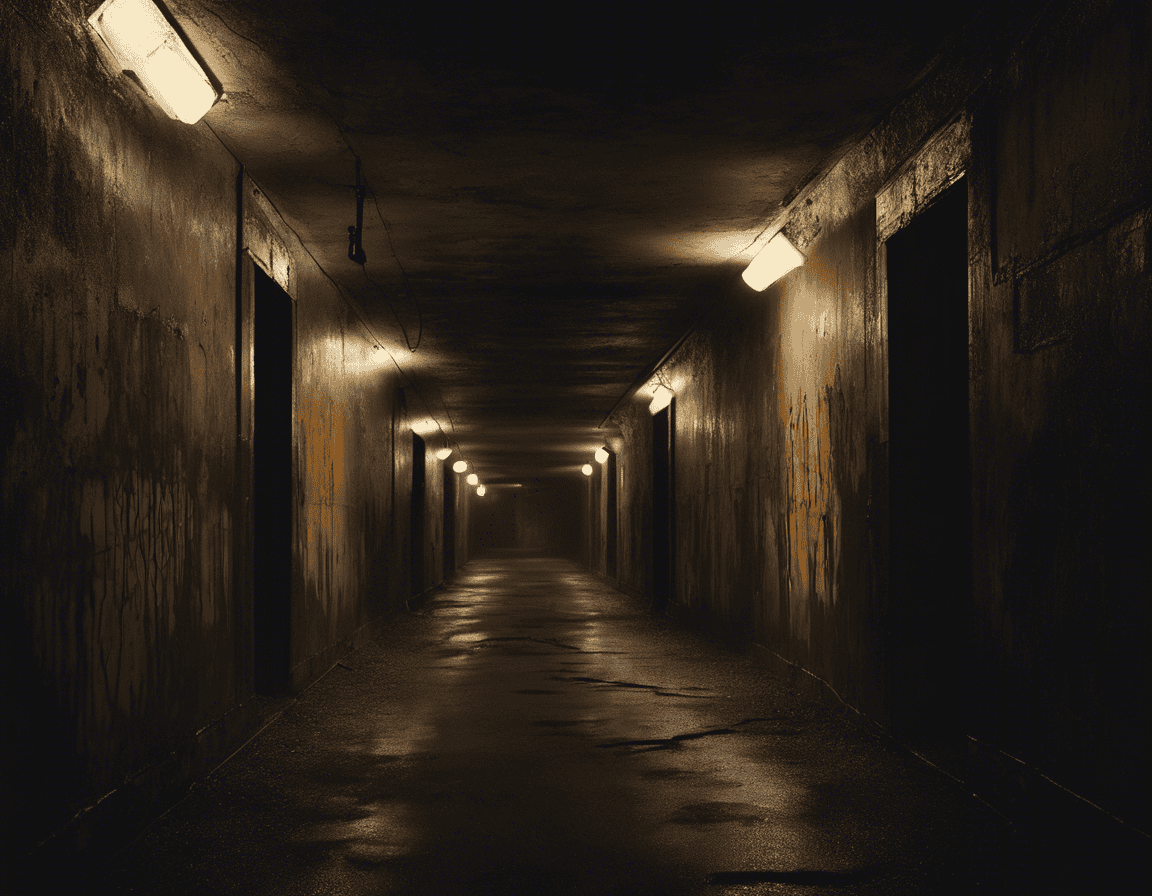
The tunnel began as a practical solution – a motorized rail system bringing supplies to the hospital. As tuberculosis casualties increased, its purpose shifted. Medical staff needed a way to remove deceased patients without affecting the morale of those still fighting the disease. The tunnel provided this crucial, if somber, service.
The system worked through straightforward engineering:
- Gurneys carried bodies from the hospital level
- A motorized pulley system controlled the descent
- Hearses waited discreetly at the bottom
- Staff maintained operations around the clock
During the epidemic’s height, the tunnel saw constant use. Records indicate that in the most severe periods, staff might need to transport a body every hour. The concrete structure includes small windows spaced along its length, offering minimal light and airflow through the passage.
Modern visitors and ghost hunters consider the Death Tunnel a main attraction. Many report strange experiences within its walls, from unexplained sounds to mysterious sensations. The tunnel’s atmosphere carries the weight of its history.
Engineering studies highlight the tunnel’s advanced design features for the 1920s:
- Disease containment measures
- Efficient transport systems
- Ventilation considerations
- Discrete operational capacity
Though its history speaks of difficult times, the Death Tunnel represents creative problem-solving during a healthcare crisis. It stands as a memorial to both the medical staff who worked tirelessly and the patients who lost their lives to tuberculosis.
Famous Ghost Stories and Paranormal Activity
Waverly Hills Sanatorium stands as one of America’s most haunted buildings, where ghostly encounters occur regularly in its historic corridors. The most notable spirit is a nurse in Room 502, who reportedly died by suicide in 1928. Many people spot her ghostly figure on the fifth floor, often with mysterious footsteps and weeping sounds following close behind.
“Timmy,” a child spirit, brings a different energy to the third floor. He likes to play with balls that visitors bring. Many paranormal researchers have seen these balls roll and bounce without anyone touching them. Their recording devices often catch what sounds like a child’s gleeful laughter.
The fourth floor buzzes with supernatural energy. People often see dark shapes moving between rooms, while the air turns ice-cold without warning. In empty rooms that once held medical equipment, both former workers and ghost hunters report hearing coughing, voices, and the clicks and whirs of hospital machines.
The first-floor solarium holds its own spine-tingling tales. Multiple visitors have watched a phantom hearse fade in and out of sight—likely an echo from the building’s past as a tuberculosis hospital. Similar eerie events happen in the Body Chute (Death Tunnel), where people feel unseen hands touch them and hear voices from nowhere.
Professional ghost hunting teams and TV shows flock to the sanatorium. Their investigations reveal:
- Strange orbs floating in photos and videos
- Equipment that stops working for no reason
- Voice recordings that seem to answer their questions
While some doubt these supernatural claims, new reports keep coming in from various sources:
- Regular visitors
- Professional researchers
- Former staff members
- Ghost hunting teams
The building’s intense spiritual activity might stem from its past. During its time as a tuberculosis hospital:
- Thousands died within its walls
- Patients endured difficult experimental treatments
- The death rate remained extremely high
- Medical practices were often harsh
Many believe these circumstances left a permanent mark on Waverly Hills, creating a place where spirits linger, either unable or choosing not to leave their final earthly home.
The sheer number and similarity of ghost sightings make Waverly Hills one of the most well-documented haunted sites in the United States. From subtle temperature shifts to full ghost appearances, each new visit adds another chapter to its supernatural story.
Modern Day Tours and Investigations
The historic Waverly Hills Sanatorium now welcomes visitors interested in medical history and paranormal activities. Through carefully planned tours, guests can discover the building’s past and perhaps experience something extraordinary.
| Tour Type | Duration | Features |
|---|---|---|
| Historical Tours | 2 hours | Daytime exploration, architecture focus, medical history |
| Ghost Tours | 4-8 hours | Evening access, paranormal equipment, guided investigation |
| Overnight Stays | 8+ hours | Full building access, specialized locations, in-depth research |
The daytime historical tours showcase the Gothic architecture and medical heritage of this Kentucky landmark. Guides present facts about tuberculosis treatment methods and highlight architectural elements that supported patient care. These tours offer an ideal introduction to the building’s significant role in medical history.
Evening ghost tours create opportunities for supernatural exploration. During these extended visits, participants can:
- Use specialized detection equipment
- Access notable locations throughout the building
- Document unusual activities
- Learn investigation techniques
- Connect with experienced guides
The overnight investigations give exclusive access to well-known areas including:
- The fifth floor
- Former children’s wing
- The death tunnel
Many guests during these sessions report:
- Strange sounds
- Temperature changes
- EVP (Electronic Voice Phenomenon) recordings
All visits need advance booking, with peak seasons like Halloween filling up several months ahead. To maintain safety and building preservation, groups follow specific size limits and safety protocols, including signed waivers.
Your visit helps maintain this historic structure – all tour income goes directly to preservation and restoration work, helping keep this unique piece of medical history intact for future visitors.
The Kentucky Tourism Board recognizes Waverly Hills as a key historical site and tourist destination, making it a must-see location for history enthusiasts and paranormal researchers alike.
Preservation and Future Plans
Waverly Hills Sanatorium has transformed from an abandoned hospital into a protected historic landmark. Since 2001, owners Charlie and Tina Mattingly have worked to protect this vital piece of Louisville’s history while opening its doors to visitors.
The building’s stunning Gothic architecture requires constant care and attention. Professional teams focus on:
- Repairing structural damage
- Installing new windows
- Stabilizing the foundation
- Restoring original terrazzo floors
Local support drives these preservation projects forward. Historical societies and community groups contribute valuable knowledge and resources to maintain the building’s authentic character. The popular ghost tours and paranormal investigations generate essential funding for:
- Regular maintenance
- Building repairs
- Historical documentation
- Safety improvements
Looking ahead, the Mattinglys plan to create a medical history museum to share the story of the tuberculosis epidemic and its treatments. Additional plans include:
| Development Area | Purpose |
|---|---|
| Event Spaces | Host special occasions and gatherings |
| Historical Tours | Education about medical history |
| Museum Exhibits | Display artifacts and medical equipment |
| Research Center | Document tuberculosis treatment history |
The Kentucky Heritage Council guides all restoration work, ensuring historical accuracy while meeting modern safety standards. This balance helps preserve the building’s character and historical value.
The ongoing care of Waverly Hills showcases successful historical preservation in action. Thanks to careful restoration and strong community backing, this former sanatorium stands as a memorial to the patients and medical staff who faced Louisville’s most challenging health crisis.
Through dedicated preservation work, Waverly Hills continues its role as an educational resource and historical treasure for future generations.
